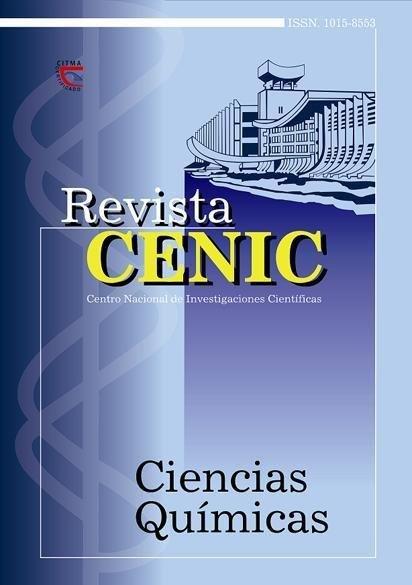Procedimiento analitico para la determinacion de Ti e Impurezas en ceramica piezoelectrica de BaTiO 3.
Abstract
The analytical control of titanium and impurities in piezoelectric ceramics are very important because they strongly influence
its electric and electromechanic properties. For example, If one piezoelectric ceramic is submitted to a strong electric field the impurities present can impede its polarization. The object of this paper is to establish an analytical procedure for the determination of titanium and impurities in piezoelectric ceramic. Several procedures for the dissolution of the sample were studied and it is found that the fusion with 3 :1 borax-carbonate mixture and later acid lixiviation was adequate. For the titanium determination two gravimetric methods were compared, one use cupferron and EDTA as precipitator agent and the other antipiryn and tanic acid. The
first method is not reported in the literature and the second is a reference method. The impurities of interest were determined by Atomic Absorption Spectroscopy using standard addition. The Ti and impurities were determined in two different reference
sample of BaTiO 3 and for a 95% on confidence no statistical significant differences were found between the reported results and the results of the methods.

Downloads
Published
How to Cite
Issue
Section
License
Copyright (c) 2003 Copyright (c) 2003 Revista CENIC Ciencias Químicas

This work is licensed under a Creative Commons Attribution-NonCommercial-ShareAlike 4.0 International License.
Los autores que publican en esta revista están de acuerdo con los siguientes términos:
Los autores conservan los derechos de autor y garantizan a la revista el derecho de ser la primera publicación del trabajo al igual que licenciado bajo una Creative Commons Atribución-NoComercial-CompartirIgual 4.0 que permite a otros compartir el trabajo con un reconocimiento de la autoría del trabajo y la publicación inicial en esta revista.
Los autores pueden establecer por separado acuerdos adicionales para la distribución no exclusiva de la versión de la obra publicada en la revista (por ejemplo, situarlo en un repositorio institucional o publicarlo en un libro), con un reconocimiento de su publicación inicial en esta revista.
Se permite y se anima a los autores a difundir sus trabajos electrónicamente (por ejemplo, en repositorios institucionales o en su propio sitio web) antes y durante el proceso de envío, ya que puede dar lugar a intercambios productivos, así como a una citación más temprana y mayor de los trabajos publicados (Véase The Effect of Open Access) (en inglés).













